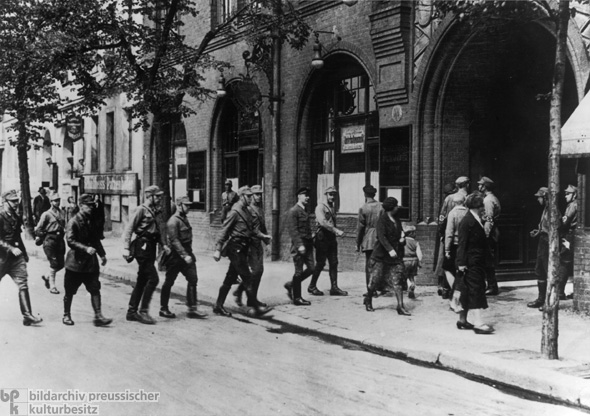













INTRODUCTION | DOCUMENTS | IMAGES | MAPS | EDITOR
|
German labor posed a serious political and organizational problem for the Nazi leadership. Not only was it largely Social Democratic or Communist, it was also strongly attached to its labor unions. After Hitler came to power, crushing the unions and bringing German workers under Nazi control became a matter of top priority. In the first weeks of Nazi rule, union leaders suffered arbitrary violence and suppression, as did other opponents of the regime. In order to keep the General German Trade Union Federation [Allgemeiner Deutscher Gewerkschaftsbund or ADGB] from disintegrating, Chairman Theodor Leipart declared his organization politically neutral. Afterwards, the ADGB turned away from the SPD and tried to cooperate with the Nazis. As part of this, Leipart and a few leaders of Christian and liberal labor unions supported the Nazi festivities on May 1, 1933. For the foreseeable future, they intended to merge into a single national labor union. What they didn’t know, however, was that Robert Ley's "Action Committee for the Protection of German Labor" had been planning the complete elimination of all unions since early April. In a countrywide action on May 2, 1933, members of the SA, the SS, and the National Socialist Factory Cell Organization [Nationalsozialistische Betriebszellenorganisation or NSBO] occupied the buildings and offices of all ADGB organizations, seized their assets, and put their officials in "protective custody." On May 4, all remaining labor unions submitted to the control of NSBO commissioners. On May 10, the German Labor Front (DAF) was founded as a National Socialist association of employees and employers, under the direction of Robert Ley.
© Bildarchiv Preußischer Kulturbesitz |
 print version
print version return to image list
return to image list previous image
previous image
